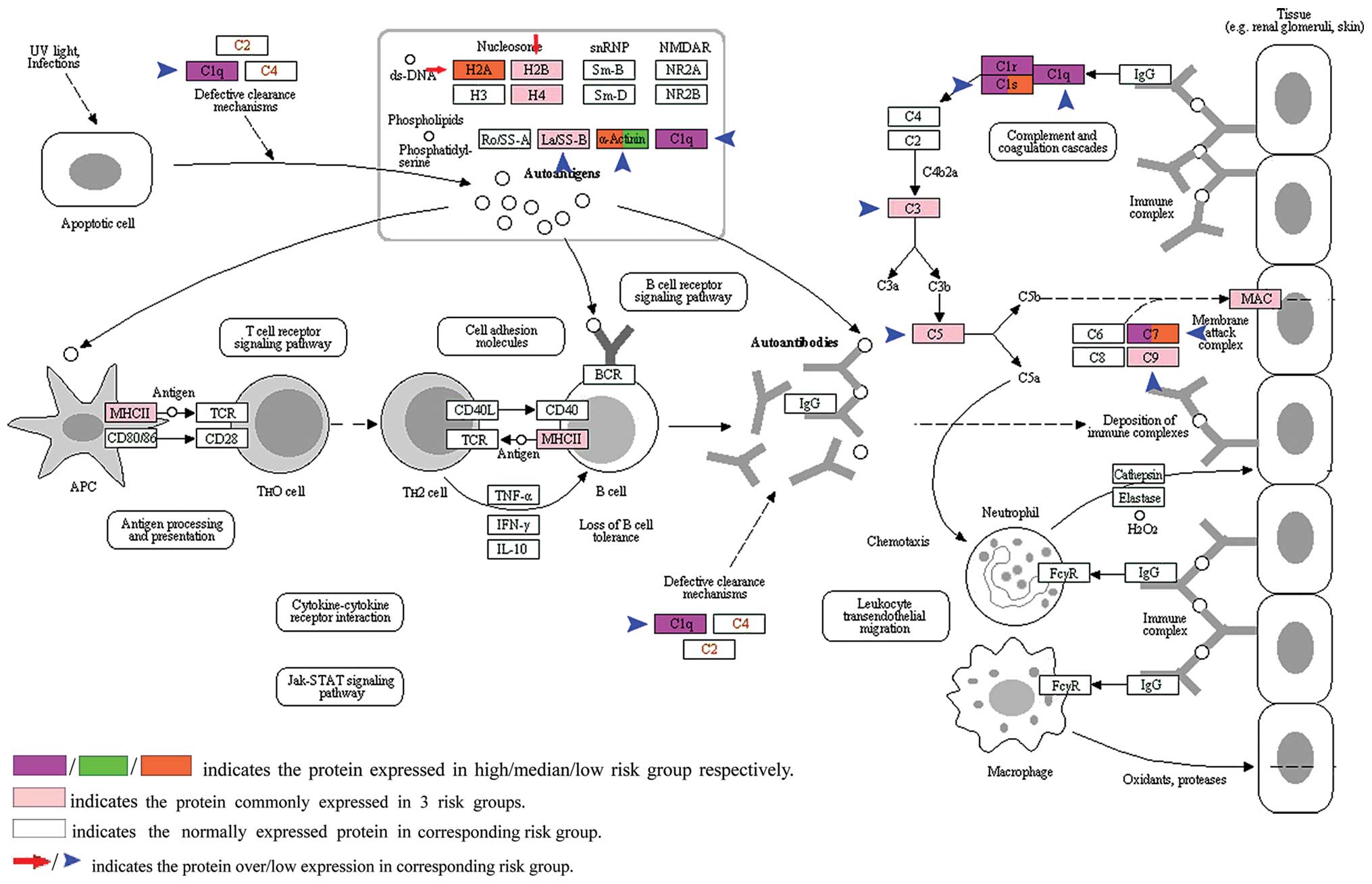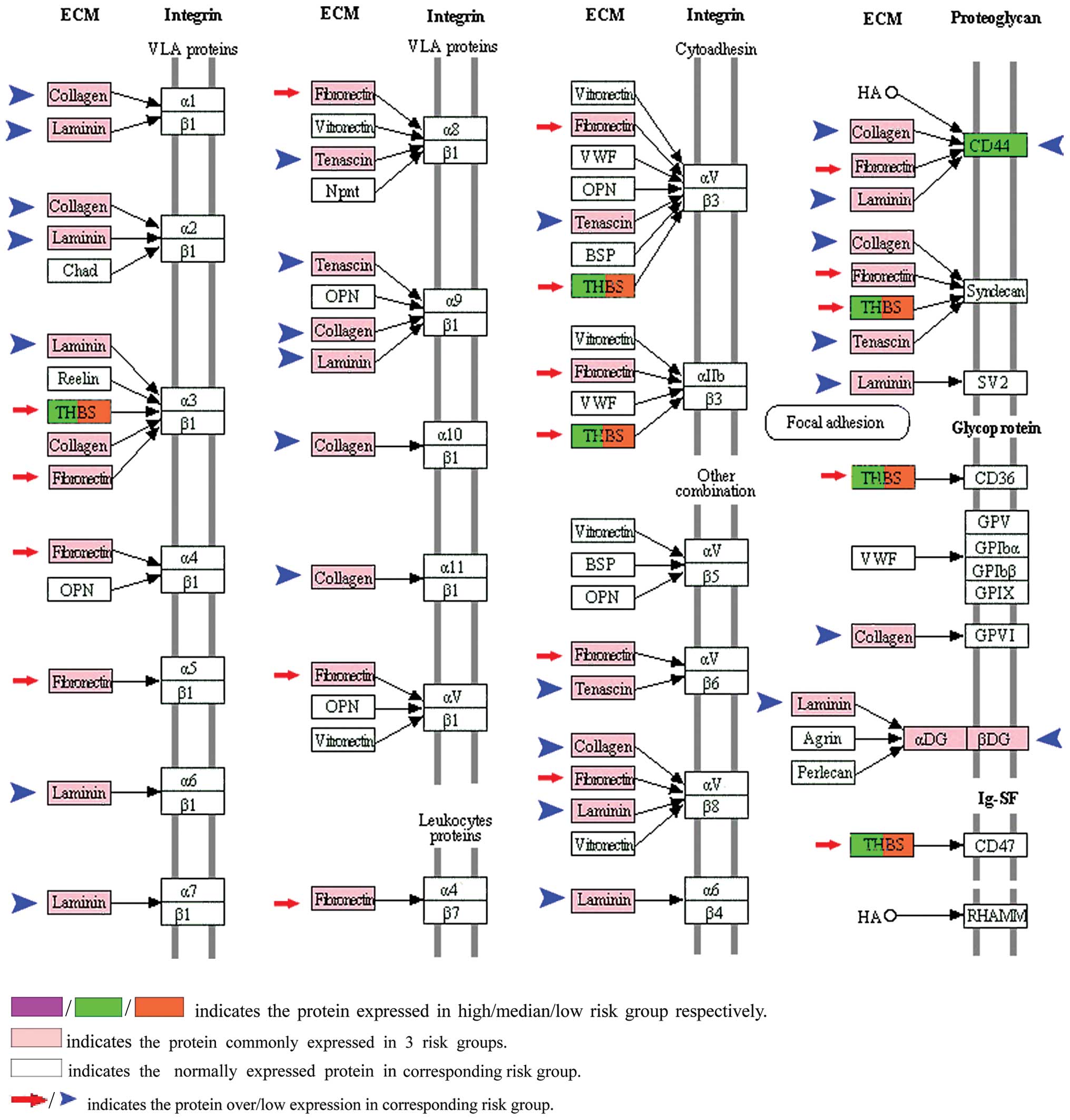|
1
|
Siegel R, Naishadham D and Jemal A: Cancer
Statistics, 2013. CA Cancer J Clin. 63:11–30. 2013. View Article : Google Scholar
|
|
2
|
Pasin E, Josephson DY, Mitra AP, Cote RJ
and Stein JP: Superficial bladder cancer: an update on etiology,
molecular development, classification, and natural history. Rev
Urol. 10:31–43. 2008.PubMed/NCBI
|
|
3
|
Knowles MA: Molecular subtypes of bladder
cancer: Jekyll and Hyde or chalk and cheese? Carcinogenesis.
27:361–373. 2006. View Article : Google Scholar : PubMed/NCBI
|
|
4
|
Hasebe T: Tumor-stromal interactions in
breast tumor progression - significance of histological
heterogeneity of tumor-stromal fibroblasts. Expert Opin Ther
Targets. 17:449–460. 2013. View Article : Google Scholar : PubMed/NCBI
|
|
5
|
van der Horst G, Bos L and van der Pluijm
G: Epithelial plasticity, cancer stem cells, and the
tumor-supportive stroma in bladder carcinoma. Mol Cancer Res.
10:995–1009. 2012.PubMed/NCBI
|
|
6
|
De Sousa E, Melo F, Vermeulen L, Fessler E
and Medema JP: Cancer heterogeneity - a multifaceted view. EMBO
Rep. 14:686–695. 2013.PubMed/NCBI
|
|
7
|
Niu HT, Shao SX, Zhang ZL, et al:
Quantitative risk stratification and individual comprehensive
therapy for invasive bladder cancers in China. Int Urol Nephrol.
41:571–577. 2009. View Article : Google Scholar : PubMed/NCBI
|
|
8
|
Tong W, Harris S, Cao X, et al:
Development of public toxicogenomics software for microarray data
management and analysis. Mutat Res. 549:241–253. 2004. View Article : Google Scholar : PubMed/NCBI
|
|
9
|
Memon AA, Chang JW, Oh BR and Yoo YJ:
Identification of differentially expressed proteins during human
urinary bladder cancer progression. Cancer Detect Prev. 29:249–255.
2005. View Article : Google Scholar : PubMed/NCBI
|
|
10
|
Guo C, Liu S, Wang J, Sun MZ and Greenaway
FT: ACTB in cancer. Clin Chim Acta. 417:39–44. 2013. View Article : Google Scholar : PubMed/NCBI
|
|
11
|
Andersen CL, Jensen JL and Ørntoft TF:
Normalization of real-time quantitative reverse transcription-PCR
data: a model-based variance estimation approach to identify genes
suited for normalization, applied to bladder and colon cancer data
sets. Cancer Res. 64:5245–5250. 2004. View Article : Google Scholar
|
|
12
|
Saviozzi S, Cordero F, Lo Iacono M,
Novello S, Scagliotti GV and Calogero RA: Selection of suitable
reference genes for accurate normalization of gene expression
profile studies in non-small cell lung cancer. BMC Cancer.
6:2002006. View Article : Google Scholar : PubMed/NCBI
|
|
13
|
Ma J, Cai W, Zhang Y, et al: Innate immune
cell-derived microparticles facilitate hepatocarcinoma metastasis
by transferring integrin α(M)β2 to tumor cells. J
Immunol. 191:3453–3461. 2013.PubMed/NCBI
|
|
14
|
Nishihira J, Ishibashi T, Fukushima T, Sun
B, Sato Y and Todo S: Macrophage migration inhibitory factor (MIF):
Its potential role in tumor growth and tumor-associated
angiogenesis. Ann NY Acad Sci. 995:171–172. 2003. View Article : Google Scholar : PubMed/NCBI
|
|
15
|
Jung H, Seong HA and Ha H: Critical role
of cysteine residue 81 of macrophage migration inhibitory factor
(MIF) in MIF-induced inhibition of p53 activity. J Biol Chem.
283:20383–20396. 2008. View Article : Google Scholar : PubMed/NCBI
|
|
16
|
Oda S, Oda T, Nishi K, et al: Macrophage
migration inhibitory factor activates hypoxia-inducible factor in a
p53-dependent manner. PLoS One. 3:e22152008. View Article : Google Scholar : PubMed/NCBI
|
|
17
|
Kanoh Y, Ohtani H, Egawa S, Baba S and
Akahoshi T: Changes of proteases and proteinase inhibitors in
androgen-dependent advanced prostate cancer patients with
alpha2-macroglobulin deficiency. Clin Lab. 58:217–225. 2012.
|
|
18
|
Misra UK, Payne S and Pizzo SV: Ligation
of prostate cancer cell surface GRP78 activates a proproliferative
and antiapoptotic feedback loop: a role for secreted
rostate-specific antigen. J Biol Chem. 286:1248–1259. 2011.
View Article : Google Scholar : PubMed/NCBI
|
|
19
|
Brunner A and Tzankov A: The role of
structural extracellular matrix proteins in urothelial bladder
cancer (review). Biomark Insights. 2:418–427. 2007.PubMed/NCBI
|
|
20
|
Ioachim E, Michael M, Stavropoulos NE,
Kitsiou E, Salmas M and Malamou-Mitsi V: A clinicopathological
study of the expression of extracellular matrix components in
urothelial carcinoma. BJU Int. 95:655–659. 2005. View Article : Google Scholar : PubMed/NCBI
|
|
21
|
Henke CA, Roongta U, Mickelson DJ, Knutson
JR and McCarthy JB: CD44-related chondroitin sulfate proteoglycan,
a cell surface receptor implicated with tumor cell invasion,
mediates endothelial cell migration on fibrinogen and invasion into
a fibrin matrix. J Clin Invest. 97:2541–2552. 1996. View Article : Google Scholar
|
|
22
|
Yamamoto S, Tsuda H, Honda K, et al: ACTN4
gene amplification and actinin-4 protein overexpression drive
tumour development and histological progression in a high-grade
subset of ovarian clear-cell adenocarcinomas. Histopathology.
60:1073–1083. 2012. View Article : Google Scholar
|
|
23
|
Giubellino A, Burke TR Jr and Bottaro DP:
Grb2 signaling in cell motility and cancer. Expert Opin Ther
Targets. 12:1021–1033. 2008. View Article : Google Scholar : PubMed/NCBI
|
|
24
|
Seong J, Wang N and Wang Y:
Mechanotransduction at focal adhesions: from physiology to cancer
development. J Cell Mol Med. 17:597–604. 2013. View Article : Google Scholar : PubMed/NCBI
|
|
25
|
Yamamoto A, Kasamatsu A, Ishige S, et al:
Exocyst complex component Sec8: a presumed component in the
progression of human oral squamous-cell carcinoma by secretion of
matrix metalloproteinases. J Cancer Res Clin Oncol. 139:533–542.
2013. View Article : Google Scholar : PubMed/NCBI
|
|
26
|
Johnson JL, Pillai S, Pernazza D, Sebti
SM, Lawrence NJ and Chellappan SP: Regulation of matrix
metalloproteinase genes by E2F transcription factors. Rb-Raf-1
interaction as a novel target for metastatic disease. Cancer Res.
72:516–526. 2012. View Article : Google Scholar : PubMed/NCBI
|
|
27
|
Ramón de Fata F, Ferruelo A, Andrés G,
Gimbernat H, Sánchez-Chapado M and Angulo JC: The role of matrix
metalloproteinase MMP-9 and TIMP-2 tissue inhibitor of
metalloproteinasas as serum markers of bladder cancer. Actas Urol
Esp. 37:480–488. 2013.PubMed/NCBI
|
|
28
|
Woolner S, O’Brien LL, Wiese C and Bement
WM: Myosin-10 and actin filaments are essential for mitotic spindle
function. J Cell Biol. 182:77–88. 2008. View Article : Google Scholar : PubMed/NCBI
|
|
29
|
Ju XD, Guo Y, Wang NN, et al: Both
Myosin-10 isoforms are required for radial neuronal migration in
the developing cerebral cortex. Cereb Cortex. 24:1259–1268.
2013.PubMed/NCBI
|

















